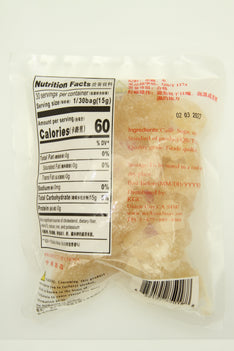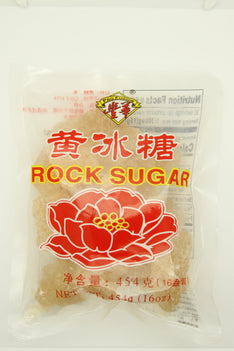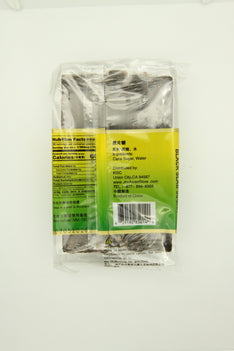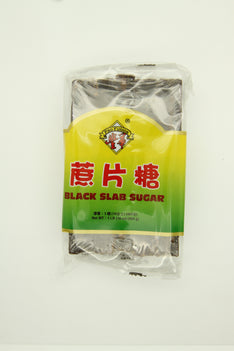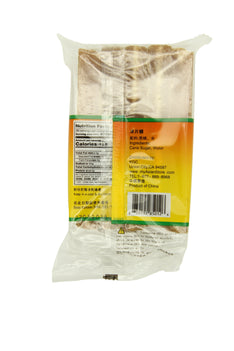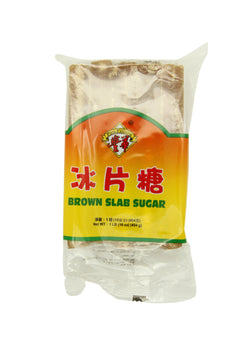Product successfully added to your shopping cart

Sugars
Beyond the White Packet: Your Guide to Sugars and Why You Should Choose One Over Another
Walk down the baking aisle of any American grocery store, and you’re met with a confusing sweetener section. Next to the familiar refined white sugar are boxes of dark brown sugar, bags of turbinado, and even exotic-sounding options like "Black Sugar" or "Rock Sugar."
Are these just fancy marketing gimmicks, or do they offer something truly different? The truth is, the journey from sugarcane or sugar beet to your pantry creates unique flavors, textures, and uses for each type. Understanding these differences can transform your cooking, baking, and even your morning coffee.
Let’s break down the sweet science behind America's most common sugars.
1. Refined White Sugar: The Classic American Standard
What it is: This is the pure, crystallized sucrose most of us picture when we think of sugar. It’s made by extracting juice from sugarcane or sugar beets, then purifying, filtering, and crystallizing it to remove all the molasses and impurities, resulting in 99.85% pure sucrose.
-
Process: Highly refined to remove all molasses.
-
Flavor Profile: Pure, unadulterated sweetness with no other flavor notes.
-
Common Forms: Granulated, Superfine (caster), and Confectioner's (powdered).
Why Choose It?
Choose white sugar when you want a clean, neutral sweetness that won’t interfere with other flavors. It’s the gold standard for:
-
Baking: Fluffy white cakes, delicate meringues, and sugar cookies where you want a light color and texture.
-
Sweetening Beverages: It dissolves easily in iced tea or lemonade.
-
General Purpose Cooking: Any recipe where sugar is meant to sweeten, not flavor.
2. Brown Sugar: The Moist, Caramel-Kissed Baker’s Friend
What it is: Contrary to popular belief, most commercial brown sugar isn't a less-processed product. It’s typically white sugar with a specific amount of molasses added back in. The amount of molasses determines whether it's light or dark brown.
-
Process: Refined white sugar is re-mixed with molasses syrup.
-
Flavor Profile: A warm, caramel-like flavor with butterscotch notes. Dark brown sugar has a deeper, more intense molasses taste.
-
Texture: Soft and moist, prone to clumping if not stored properly.
Why Choose It?
Choose brown sugar when you want to add moisture and a rich, warm flavor.
-
Chewy Bakes Goods: Chocolate chip cookies, gingerbread, and oatmeal raisin cookies get their signature chew from brown sugar.
-
Barbecue Sauces & Glazes: Its molasses content is perfect for creating a sticky, flavorful glaze for ham, ribs, or baked beans.
-
Caramel Flavors: It’s essential in recipes like banana bread and pumpkin spice muffins.
3. "Black Sugar" & Other Less-Refined Sugars: The Mineral-Rich Artisans
This category includes sugars often labeled as Turbinado, Demerara, Muscovado, and Japanese-style Kokuto (Black Sugar). These are the true "less-processed" sugars.
What they are: After the sugarcane juice is extracted and heated, it forms crystals. Instead of being fully refined to white sugar, these crystals are spun in a centrifuge (like a turbine, hence "turbinado") to remove some of the molasses. They retain more of their natural molasses and trace minerals.
-
Process: Minimally refined, retaining natural molasses.
-
Flavor Profile: A more complex, toasty, caramel-like flavor. Muscovado (especially dark) is intensely molasses-flavored and moist, while Turbinado has a milder, drier crunch.
-
Texture: Can range from coarse and dry (Turbinado) to soft and sticky (Muscovado).
Why Choose Them?
Choose these for their distinct flavor and texture.
-
As a Topping: Their coarse texture and deep flavor are perfect for sprinkling on oatmeal, yogurt, or topping a crème brûlée.
-
In "Artisan" Baking: Use them in recipes where you want a deeper, more complex caramel note, like in whole-grain breads, spice cakes, or robust cookies.
-
In Coffee & Cocktails: Many prefer the richer flavor of Turbinado or Demerara in their coffee or an Old Fashioned.
-
Note on "Health": While they contain trace amounts of minerals like calcium and potassium, the amounts are nutritionally insignificant. Don't choose them for health benefits; choose them for their superior flavor.
4. Rock Sugar: The Clear, Slow-Dissolving Jewel
What it is: Rock sugar is a large-crystal sugar, often sold as clear, golden, or multi-colored lumps. It's made by allowing a supersaturated sugar solution to crystallize slowly over time, forming large, hard crystals.
-
Process: Slow re-crystallization of white sugar.
-
Flavor Profile: A very mild, delicate sweetness, less intense than granulated sugar.
-
Texture: Hard, crystalline chunks that dissolve very slowly.
Why Choose It?
Choose rock sugar for its visual appeal and controlled sweetness.
-
In Asian Cuisine: It’s a staple in Chinese cooking, used in classic dishes like Red Braised Pork Belly (Hong Shao Rou) for a glossy sheen and subtle sweetness.
-
Sweetening Teas: A lump or two in hot tea provides a gentle, slow-release sweetness that doesn't overpower the tea's flavor. It's visually appealing in a glass of iced tea.
-
As a Garnish: Used to decorate cookies, cakes, and gingerbread houses.
The Final Scoop: Why Your Choice Matters
So, which sugar should you reach for? It’s not about one being "better," but about which is right for the job.
-
For Neutral Sweetness & Perfect Texture: Refined White Sugar is your undisputed champion.
-
For Moisture & Warm Caramel Flavor: Brown Sugar is a baker's best friend.
-
For Complex Flavor & Artisan Crunch: Less-Refined Sugars (Turbinado, Muscovado) add a gourmet touch.
-
For Slow-Dissolving, Mild Sweetness & Shine: Rock Sugar is the secret weapon for specific teas and dishes.
The next time you’re at the store, think beyond mere sweetness. Your choice of sugar is a powerful tool, and picking the right one is the secret ingredient to unlocking a world of flavor in your kitchen.

